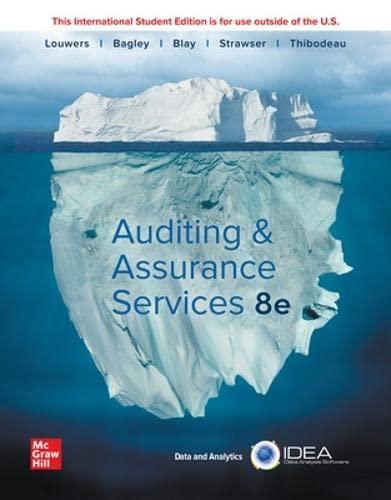Question #1 Craig Company buys and sells one product. Its beginning inventory, purchases, and sales during calendar year 2015 follow: Date Activity Units Acquired at Cost Units Sold at Retail Unit Inventory 400 units @$14 $ 5,600 Jan. Jan Beg. inventory - Sale 400 units 200 units 15 200 units @ $30 200 units@$15$ 3,000 March 10 Purchase 400 units pri Sale 200 units@$30 200 units @$16 $ 4,800 250 units@$20-$5.000 May Sept 22 9 Purchase 300 units 500 units Purchase 750 units Nov Sale.. 300 units@$35 450 units 100 units@$21 $ 2100 Nov 28 Purchase 550 units 700 units Totals 1,250 units $20,500 Additional tracking data for specific identification: (1) January 15 sale-200 units S14, (2) April 1 sale-200 units $15, and (3) November 1 sale-200 units S14 and 100 units @ $20. Required 1. Calculate the cost of goods available for sale. 2. Apply the four different methods of inventory costing (FIFO, LIFO, weighted average, and specific identification) to calculate ending inventory and cost of goods sold under each method using the perpetual system. Question # 2 A company reports the following beginning inventory and purchases for the month of January. On January 26, the company sells 350 units. 150 units remain in ending inventory at January 31. Units Unit Cost $3.00 Beginning inventory on January Purchase on January 9 Purchase on January 25 320 3.20 80 3.34 100 Assume the periodic inventory system is used: 1. Determine the costs assigned to ending inventory when costs are assigned based on the FIFO method. (Round per unit costs and inventory amounts to cents.) 2. Determine the costs assigned to ending inventory when costs are assigned based on the weighted average method. (Round per unit costs and inventory amounts to cents.) Question #3 Warnerwoods Company uses a perpetual inventory system. It entered into the following purchases and sales transactions for March. (For specific identification, the March 9 sale consisted of 80 units from beginning inventory and 340 units from the March 5 purchase; the March 29 sale consisted of 40 units from the March 18 purchase and 120 units from the March 25 purchase.) Units Sold at Retail Units Acquired at Cot Date Activities 100 units@$50.00 per unit Beginning inventory Mar I 400 units @$55.00 per unit Mar. 5 Purchase 420 units @$85.00 per unit Mar 9 Sales 120 units @$60.00 per unit Purchase Mar 18 200 units @ $62 00 per unit Mar 25 Purchase Sales 160 units @$95.00 per unit Mar 29 580 units 820 units Totals Required Question #3 Warnerwoods Company uses a perpetual inventory system. It entered into the following purchases and sales transactions for March. (For specific identification, the March 9 sale consisted of 80 units from beginning inventory and 340 units from the March 5 purchase; the March 29 sale consisted of 40 units from the March 18 purchase and 120 units from the March 25 purchase.) Units Sold at Rotail Units Acquired at Cost Date Activitios 100 units@$50.00 per unit 400 units @$55.00 per unit Mar. I Beginning inventory Purchase.. Mar. 5 420 units@ $85.00 per unit Sales Mar. 9 120 units@$60.00 per unit 200 units@ $62.00 per unit Mar. 18 Purchase Purchase. Mar. 25 160 units$95.00 per unit Mar 29 Sales 580 units 820 units Totals Required Compute cost of goods available for sale and the number of units available for sale. 1. 2. Compute the number of units in ending inventory. 3. Compute the cost assigned to ending inventory using (a) FIFO, (b) LIFO, (c) weighted average, and (d) specific identification. (Round all amounts to cents.) 4. Compute gross profit earned by the company for each of the four costing methods in part 3. Styles Question #1 Craig Company buys and sells one during calendar year 2015 follow: product. Its beginning inventory, purchases, and sales Date Activity Units Acquired at Cost Units Sold at Retail Unit Inventory 400 units$14-$ 5,600 Jan. Beg. inventory.... 15 400 unita Jan. Sale 200 units@$30 200 units 200 units@$15-$ 3,000 March 10 Purchase. 400 units a April Sale 200 units @ $30 200 units 300 units@$16$ 4,800 250 units@$20$ 5,000 9 May Purchase. S00 units Sept. 22 Purchase 750 units Nov Sale 300 units @$3S 450 units 100 units $21-$2100 1,250 units Purchase 550 units o 28 Totals 700 units $20,500 Additional tracking data for specific identification: (1) January 15 sale-200 units $14, (2) April 1 sale-200 units@ $15, and (3) November 1 sale-200 units $14 and 100 units @ $20. Required Calculate the cost of goods available for sale. 1. Apply the four different methods of inventory costing (FIFO, LIFO, weighted average, and specific identification) to calculate ending inventory and cost of goods sold under each method using the perpetual system. 2










